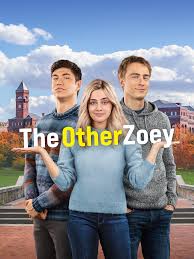It’s rare to come across a film that takes you on an emotional journey through both light-hearted humor and deep, introspective moments. The Other Joey does exactly that, blending comedy with drama in a way that feels genuine. The film stars Sam Worthington as Joey, a man caught in the whirlwind of family expectations, personal growth, and a series of unexpected life events. Set in modern-day Sydney, Australia, the film offers a unique mix of family drama, romance, and self-discovery, all under the umbrella of a quirky, feel-good dramedy.
The plot revolves around Joey, a man who has always lived in the shadow of his more successful, well-loved twin brother. When a sudden tragedy befalls the family, Joey finds himself forced to step out of his brother’s shadow and into his own identity. Along the way, he forms new relationships, rekindles old ones, and learns that the greatest obstacle he’s ever faced is himself. As Joey navigates the complexities of familial bonds, friendships, and love, the film tackles themes of self-worth, identity, and personal responsibility. Without giving away too much, the climax of the film shifts the narrative in a profound way, pushing Joey to confront the one person he has avoided for too long—himself.
One of the standout aspects of this film is Sam’s performance. He brings Joey to life with a vulnerability and charm that make him both relatable and engaging. Joey’s struggle with his own insecurities is something many can identify with, and Sam portrays this internal conflict with subtlety. Whether it’s through the comedic awkwardness of trying to impress a love interest or the more serious moments of confronting his family, Sam nails the complexity of his character. His chemistry with his co-stars, particularly Sarah Snook, who plays his love interest, adds an extra layer of authenticity to the film. Their scenes together are both light and emotionally charged, showcasing a genuine connection that elevates the film’s romantic subplot without overshadowing Joey’s personal journey.
The direction by Mark Lamprell is another strong point. His approach is measured and purposeful, allowing the characters and plot to evolve naturally without forcing dramatic moments. He expertly balances the tone of the film, keeping the humor light and the dramatic beats impactful. One of the best-directed scenes involves a quiet moment between Joey and his mother, where the tension in their relationship is laid bare through minimal dialogue. The use of silence, facial expressions, and simple, intimate camera work emphasizes the emotional weight of the moment without feeling melodramatic. Mark’s ability to bring out such depth in seemingly simple scenes is a testament to his skill as a director.
Another noteworthy element is the cinematography by Andrew Commis. The film captures the beauty of Sydney’s coastal landscapes, using wide shots of beaches, parks, and urban settings to reflect Joey’s internal journey. The visuals are bright and warm, creating a sense of hope and possibility even in Joey’s darker moments. The use of lighting is particularly effective during the night scenes, where soft, ambient lights create a dreamlike atmosphere, emphasizing Joey’s feelings of introspection and uncertainty. The combination of these visual elements with the film’s emotional core creates a viewing experience that is both aesthetically pleasing and emotionally resonant.
The musical score, composed by Nigel Westlake, complements the tone of the film perfectly. The soundtrack mixes upbeat, whimsical tracks with more somber, reflective pieces, matching Joey’s emotional ups and downs. A particularly memorable moment is a montage of Joey trying to reinvent himself, set to an energetic, light-hearted track that injects humor into the scene while also highlighting his earnest efforts. The music never overpowers the film but instead subtly enhances the emotions at play, making key moments feel even more impactful.
The film’s theme of self-discovery is woven throughout all aspects of the story, from the dialogue to the character interactions. Joey’s journey is not just about stepping out of his brother’s shadow; it’s about learning to accept himself for who he is, flaws and all. The film avoids the cliché of a perfect, dramatic transformation and instead focuses on the more realistic, gradual process of personal growth. This makes Joey’s character arc feel more genuine and relatable. There are no easy fixes or grand revelations, just a man learning to navigate life’s complexities, one step at a time.
One minor critique of the film is that some of the secondary characters, while well-acted, feel slightly underdeveloped. Joey’s brother, for example, who plays such a significant role in Joey’s identity crisis, could have been explored more deeply to give the audience a clearer understanding of their relationship. However, this doesn’t take away from the overall effectiveness of the film, as the focus remains firmly on Joey’s personal journey.
Overall, The Other Joey is a charming, heartfelt film that balances humor and emotion in a way that feels authentic. Sam’s outstanding performance, combined with strong direction, beautiful cinematography, and a fitting soundtrack, make this film a must-watch for anyone who enjoys character-driven stories. It’s not just a film about sibling rivalry or romantic love—it’s about learning to love oneself. If you’re looking for a feel-good movie that doesn’t shy away from deeper emotional themes, this is a film that delivers. Its relatability and warmth will resonate with anyone who has ever struggled to find their place in the world.







